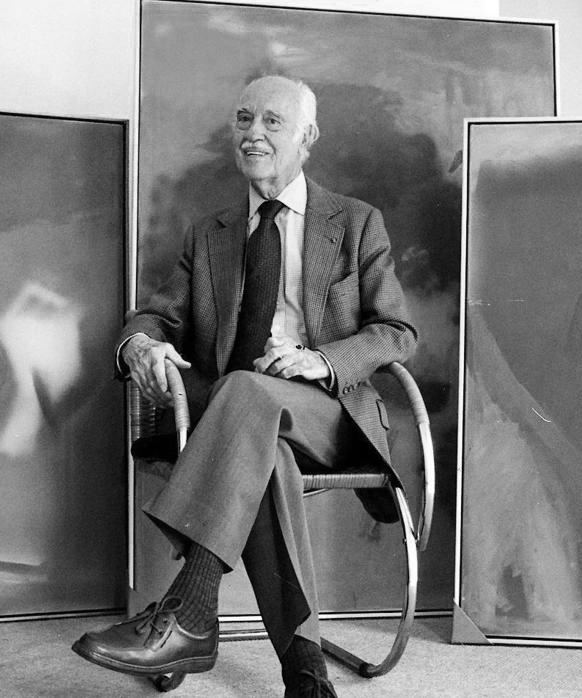Vicente, Esteban

Esteban Vicente, known as a pioneering artist in the abstract expressionism movement, was born in 1903 in Turégano, Segovia. In 1919, he moved to Madrid to study sculpture in the Escuela de Bellas Artes de San Fernando. However, soon after he decided to dedicate his career to painting. During his time in Madrid, he formed lasting friendships with writers and artists, such as Federico Garcia Lorca, Jimenez Rafael Alberty, Luis Buñuel, Francisco Bores or Wladislaw Jahl, who greatly influenced his way of thinking. The literary magazine, “Verso y Prosa y Mediodía”, published his first drawings.
After a decade living in Spain’s capital city, he traveled to Paris where he discovered the works of Picasso, Dufy and Marx Ernst, and where he had the opportunity to meet Michael Sonnabed, his future dealer in New York. While in Paris, he acquired a new understanding of balance and composition, evident in the new works he presented at galleries in Madrid and Barcelona during that period. His stay in Paris marked a pivotal moment in the artist’s career, as it was there that he began to shape the visual identity that he would further develop in the subsequent years in New York City.
After a brief break to defend the República, in 1936 he left behind Europe to live in the big apple. He seamlessly integrated into this new city, finding rapid success by holding his first exhibition just a year after moving. Vicente got involved with abstract expressionism, the artistic style that dominated the great Nord American city at the time. He rapidly became part of the admirable and impactful movement alongside Rothko, de Kooning, Pollock, Kline and Newman. Subsequently, his works transformed into chromatic variations that unfolded over subtly geometric forms.
In 1950, the artist was selected for two of the most prominent exhibitions in New York: “New Talents” at Kootz Gallery, organized by art critic Celement Greenbarg and art historian Meyer Schapiro, and “9th Street”. In addition, Thomas b. Hess’ important discussion about Vicente in his groundbreaking essay, “Abstract Painting: Background and American Phase”, identified him with lyrical expressionism beside Philip Guston or William Baziotes.
During his artistic career, Vicente rejected the excessive technique of gestural painting, choosing instead a practice based on color, form, and matter. This allowed him to experiment with various color interactions and to discover diverse ways to create space in his works. His brushstrokes were simultaneously free, delicate, and strong, emphasizing the texture of the canvas as well as the power of colors.
Vicente continues to be recognized as one of the central figures who shaped the international influence of abstract expressionism. Spain awarded him, for his artistic achievements, the Medalla de Oro de las Bellas Artes in 1991, while in 1998, the Junta de Castilla y León, conceded him the Premio de las Artes. That same year, the Museo Reina Sofía in Madrid curated an exhibition honoring him, and his native region, Segovia, opened the doors to the Museo Esteban Vicente.
Nowadays, his works are prominently featured in esteemed exhibitions around the world and are important additions to both public and private collections, gracing some of the most recognized and important museums worldwide. Among these are the Metropolitan Museum of Art, the Museum of Modern Art, the Whitney Museum of American Art, the Guggenheim in New York, Tate Gallery in London, or the Museum of Fine Arts in Boston.

